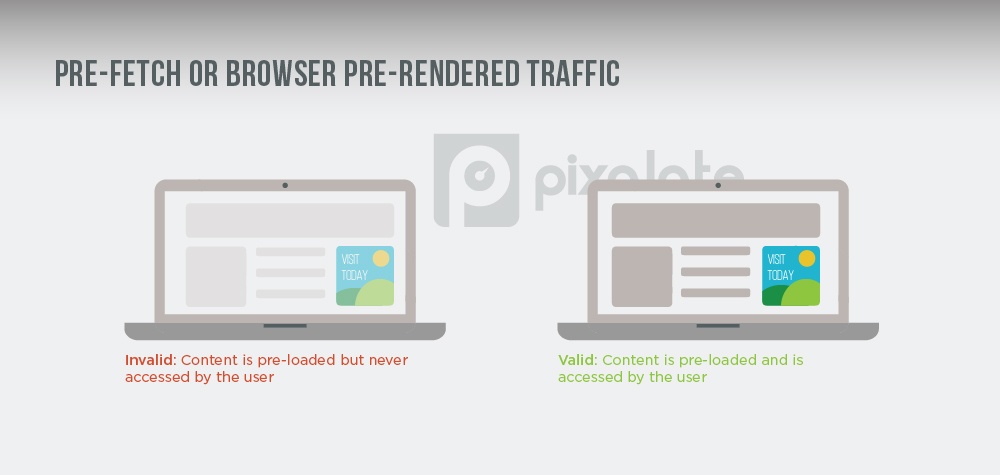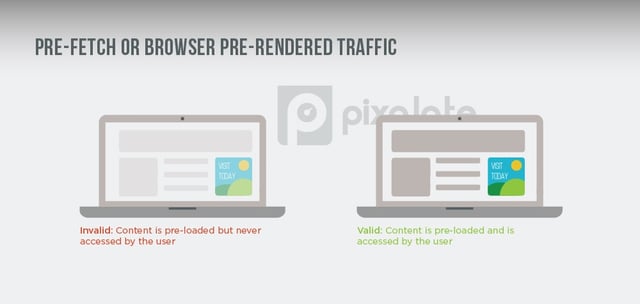
Pixalate is an MRC-accredited company for the detection and filtration of Sophisticated Invalid Traffic ("SIVT") desktop and mobile web impressions.
According to the Media Rating Council’s (MRC) standards for Invalid Traffic Detection and Filtration Guidelines, there are two types of invalid traffic:
One example of GIVT is “pre-fetch or browser pre-rendered traffic.”

Modern web browsers may load some website content prior to the user accessing it. This is done to help the user have a more seamless, responsive experience on the web. However, this preloading can result in an ad impression, and such impressions are filtered out, once it has been determined that the given pre-loaded content was never actually accessed by the user.
Much like the User-Agent header described here, many browsers use a standard field to describe the transaction as a pre-load. GIVT-accredited companies will use this field where available and other transactional data where not to map valid subsequent impressions and clicks to this activity.
MRC-accredited ad fraud detection and prevention companies must be able to identify pre-fetch or browser pre-rendered traffic (and clicks), based on the MRC’s definition of GIVT.
Pre-fetch or browser pre-rendered traffic is just one example of General Invalid Traffic (GIVT) as defined by the MRC. To learn about some of the other examples of GIVT, click on any of the examples below:
*By entering your email address and clicking Subscribe, you are agreeing to our Terms of Use and Privacy Policy.
These Stories on Thought Leadership
*By entering your email address and clicking Subscribe, you are agreeing to our Terms of Use and Privacy Policy.

Disclaimer: The content of this page reflects Pixalate’s opinions with respect to the factors that Pixalate believes can be useful to the digital media industry. Any proprietary data shared is grounded in Pixalate’s proprietary technology and analytics, which Pixalate is continuously evaluating and updating. Any references to outside sources should not be construed as endorsements. Pixalate’s opinions are just that - opinion, not facts or guarantees.
Per the MRC, “'Fraud' is not intended to represent fraud as defined in various laws, statutes and ordinances or as conventionally used in U.S. Court or other legal proceedings, but rather a custom definition strictly for advertising measurement purposes. Also per the MRC, “‘Invalid Traffic’ is defined generally as traffic that does not meet certain ad serving quality or completeness criteria, or otherwise does not represent legitimate ad traffic that should be included in measurement counts. Among the reasons why ad traffic may be deemed invalid is it is a result of non-human traffic (spiders, bots, etc.), or activity designed to produce fraudulent traffic.”

